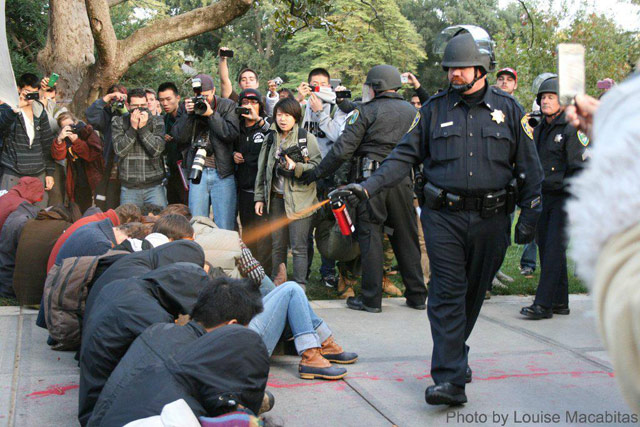On the other hand, the public screen itself acts as a place of politics and creates reality. While watching the presidential election results last night, I found myself confused. The numbers of the Huffington Post and NBC did not match. When NBC announced Obama as the winner, CNN continued to add the numbers together without mentioning any concrete results. Switch to Fox News and you see pundits arguing that the results are still too close to call for sure. What was real? That's when I realized that all of my knowledge regarding the presidential elections relied on media, that I believed the numbers without thinking about how the news media could fabricate the numbers. The public screen itself acts as the "ground of Being" (132).
DeLuca and Peeples also write about how the news is inherently attracted to violence and deviation from the routine. I was abroad last fall semester during the height of the Occupy Movement. Yet, in my Japanese class, my native Japanese teacher had heard about the UC Davis pepper spray incident. That means that the incident was covered on the Japanese news. This is an example of how violence garners attention, that images hold a huge amount of power in bringing international focus to an issue. The public screen plays a critical role in shaping the perspectives of the audience and informing the masses.

Jenny, I think your point about the public screen not only shaping but actually creating reality is quite astute. And while we can critique the media for being drawn to violence or sensational stories, remember that D&P are arguing that we can use this very weakness of the news cycle against it, namely to employ symbolic violence in order to gain precious "screen time."
ReplyDelete